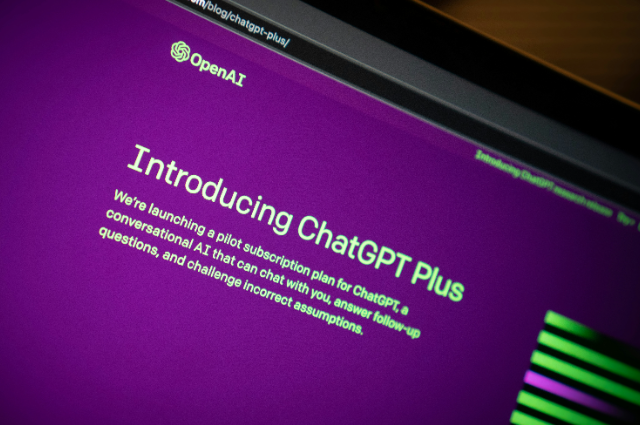
Photo by Jonathan Kemper on Unsplash
India is no longer a silent observer in the global AI race; it is sprinting ahead. With generative AI, vernacular models like BharatGen, and a state-led IndiaAI Mission, the country stands poised to influence not just technological innovation but societal transformation.
From classrooms to boardrooms, hospitals to farms, AI isn't a future promise it’s today’s revolution. This narrative examines how AI will reshape India and perhaps the world by 2030.
1. The AI Momentum: Data, Adoption & Economic Lift
- India is leading the world in AI ROI adoption: 23% of Indian firms already achieving measurable gains from generative AI, nearly double the global average of 12%.
- Estimates suggest AI could contribute up to $500 billion to India’s GDP by 2035, adding roughly 1.3% per year.
- Freshworks reports show 79% of companies in India plan to boost AI spending in 2025, with 45% of employees using AI daily, twice the global average.
- The AI adoption index 2024 reveals that 87% of enterprises are in the “Enthusiast” or early expert stage, with stronger sectoral maturity in manufacturing, telecom, and BFSI.
2. BharatGen & Bhashini: AI That Speaks India
- BharatGen, India’s homegrown multimodal AI model, launched in mid-2025, supports 22 Indian languages, processing text, speech, and images to power healthcare, education, agriculture, and governance solutions.
- Through Bhashini, India’s NLP platform, AI enables multilingual voice and translation services used even by national leaders for real-time translation as part of IndiaAI’s accessibility push.
3. AI at Work: Jobs Lost, Jobs Found
- EY India projects generative AI will improve productivity in India’s $254 bn IT sector by 43 45% over five years, particularly in development (60%), BPO (52%), and consulting (47%).
- Yet, structural challenges remain: 92% of companies still struggle to scale AI beyond pilot phases; only 8% claim full implementation.
- Industry voices like Paytm’s founder warn of impending job displacement, especially in software coding roles expected to see 80% automation within two years.
- In BPOs, AI tools like real-time accent converters and chatbots are both optimizing and obsoleting tasks, prompting calls for upskilling into human-centric roles focused on empathy and relationship-building.
4. Governance, Health, and Agriculture: AI for Inclusive Growth
- Governments are deploying AI in law-making dashboards, facial recognition-enabled security, and welfare services, starting in states like Uttar Pradesh, training MLAs and consolidating real time governance dashboards.
- In health and agriculture, AI-driven diagnostic tools and drone analytics are stepping in where human capacity is limited, supporting decisions and sanitizing public services.
- NITI Aayog has committed ₹500 crore (2025–26) to establish AI Centres of Excellence, backed by a ₹10,372 crore IndiaAI Mission, with IITs and AIIMS leading R&D across verticals.
5. Challenges Ahead: Legacy, Ethics & Talent Gaps
- Data silos, legacy systems, and unclear value models stall progress: many pilots fail to translate into enterprise impact or ROI.
- Skilled professionals remain in short supply AI engineers, data scientists, and MLOps experts, prompting widespread reskilling and partnerships with academia.
- Ethical concerns have led to the creation of the IndiaAI Safety Institute, grounded in a “Safe & Trusted” AI pillar under IndiaAI Mission, promoting transparency, explainability, and inclusion.
6. By 2030: A Vision of Human Centric Nation Building
- Education: AI-powered learning platforms will allow personalized, multilingual instruction from primary to university level, dislocating rote paradigms and unlocking latent talent in vernacular India.
- Health: AI triage bots in remote clinics will augment doctors, enabling real-time diagnosis and predictive public health initiatives.
- Governance: Citizen services will be proactive and predictive blockchain-aided schemes, grievance redressal via multilingual agents, and real-time civic engagement dashboards.
- Economy: As automation absorbs routine jobs, new roles will emerge in AI oversight, ethics, creativity, and innovation, shifting India toward a fusion of human ingenuity and machine efficiency.
The Human Equation in an Automated Era
By 2030, AI may power India but only humans can ensure it uplifts humanity. The journey ahead demands intentional, inclusive design, ethical governance, skill cultivation, and cultural consciousness. When BharatGen meets Indian grassroots, when generative AI pairs with rural users, the question becomes not whether India leads but how well it leads with dignity, diversity, and democratic agency.
